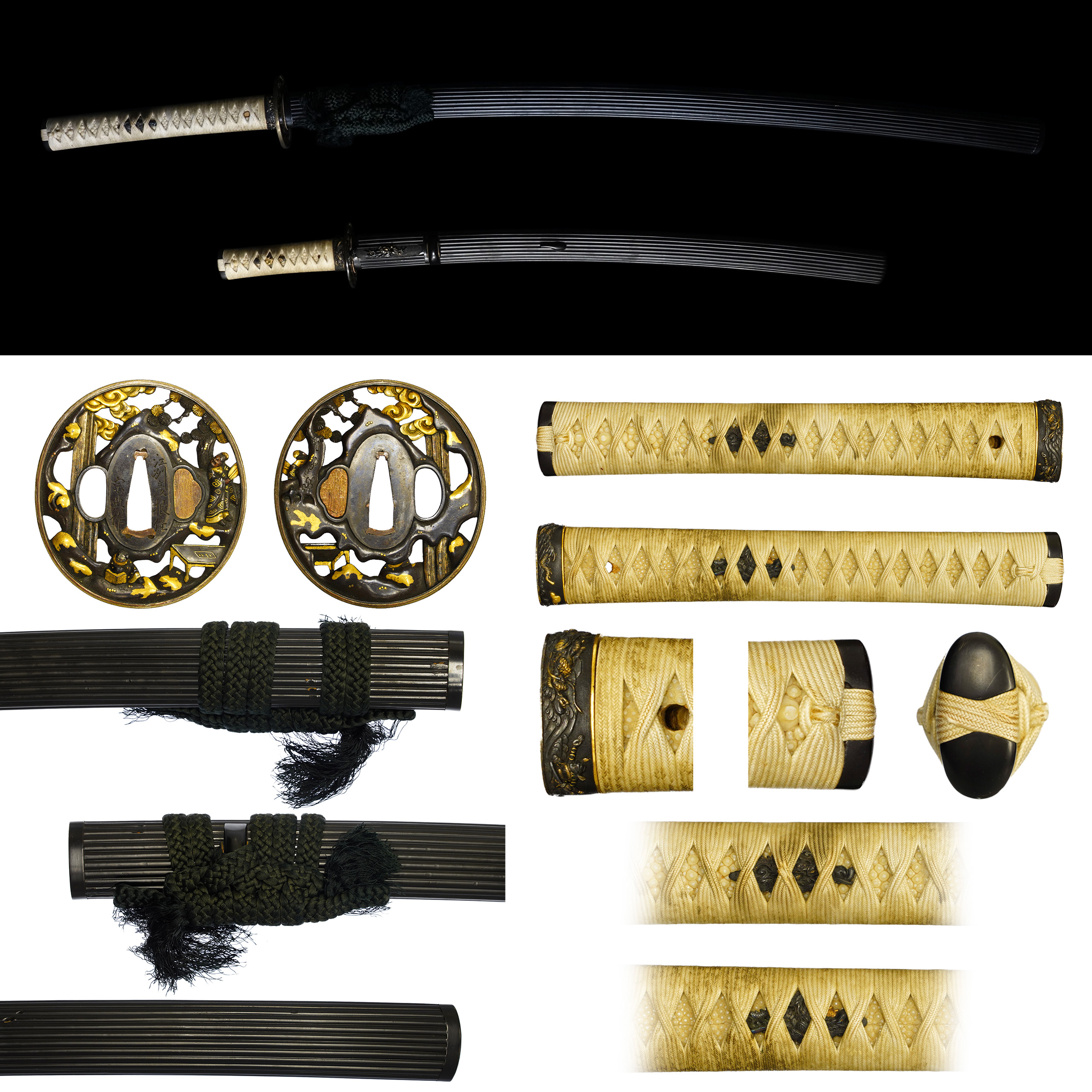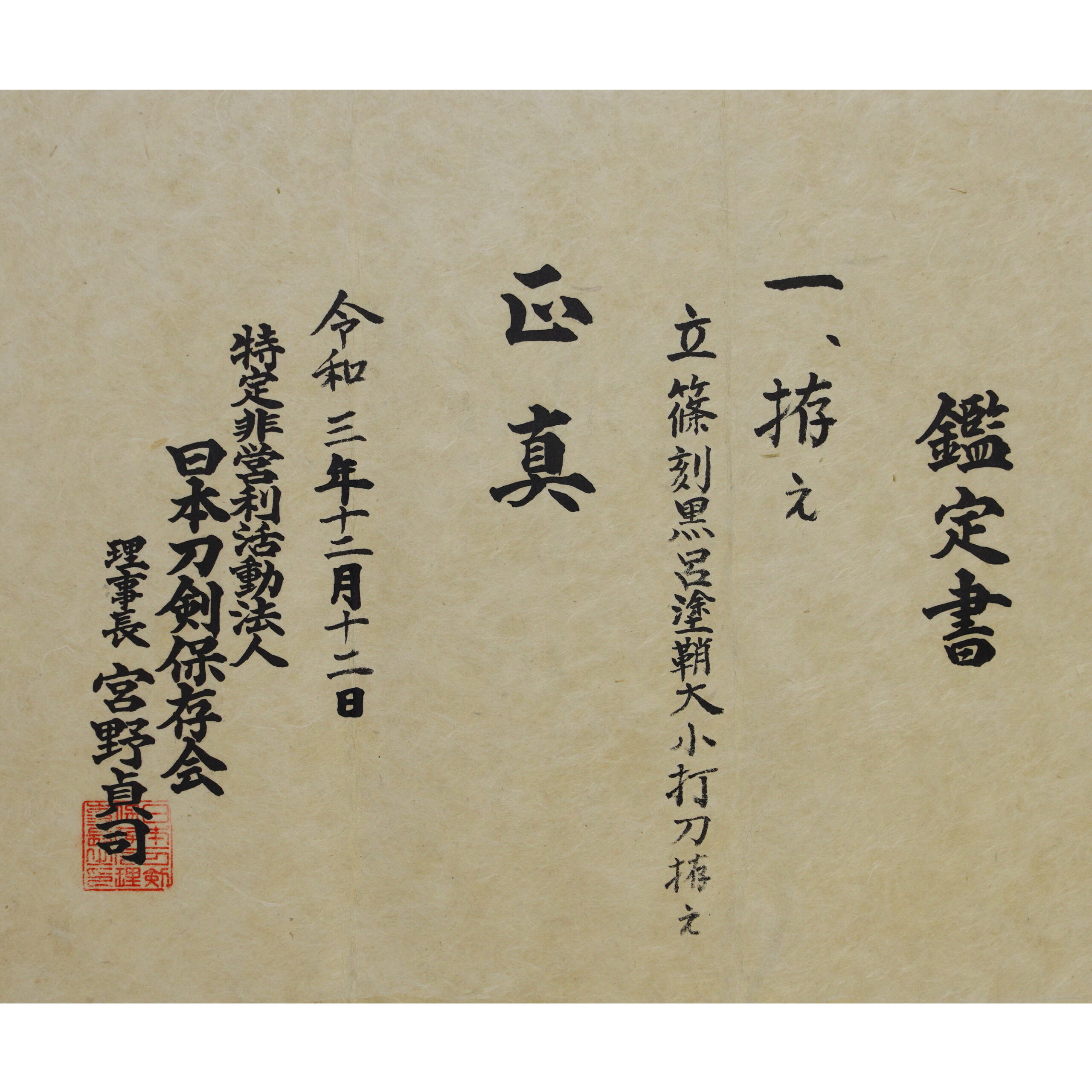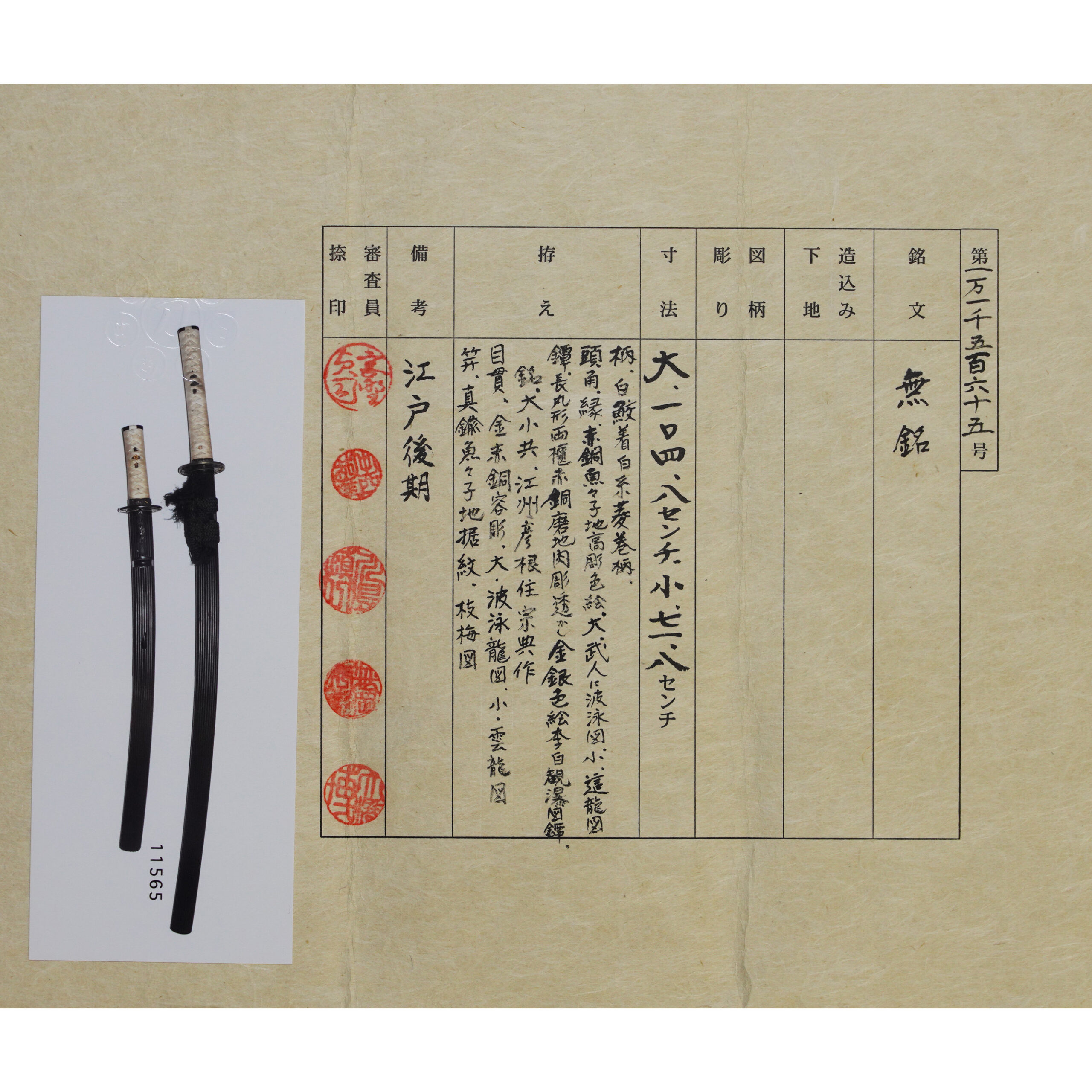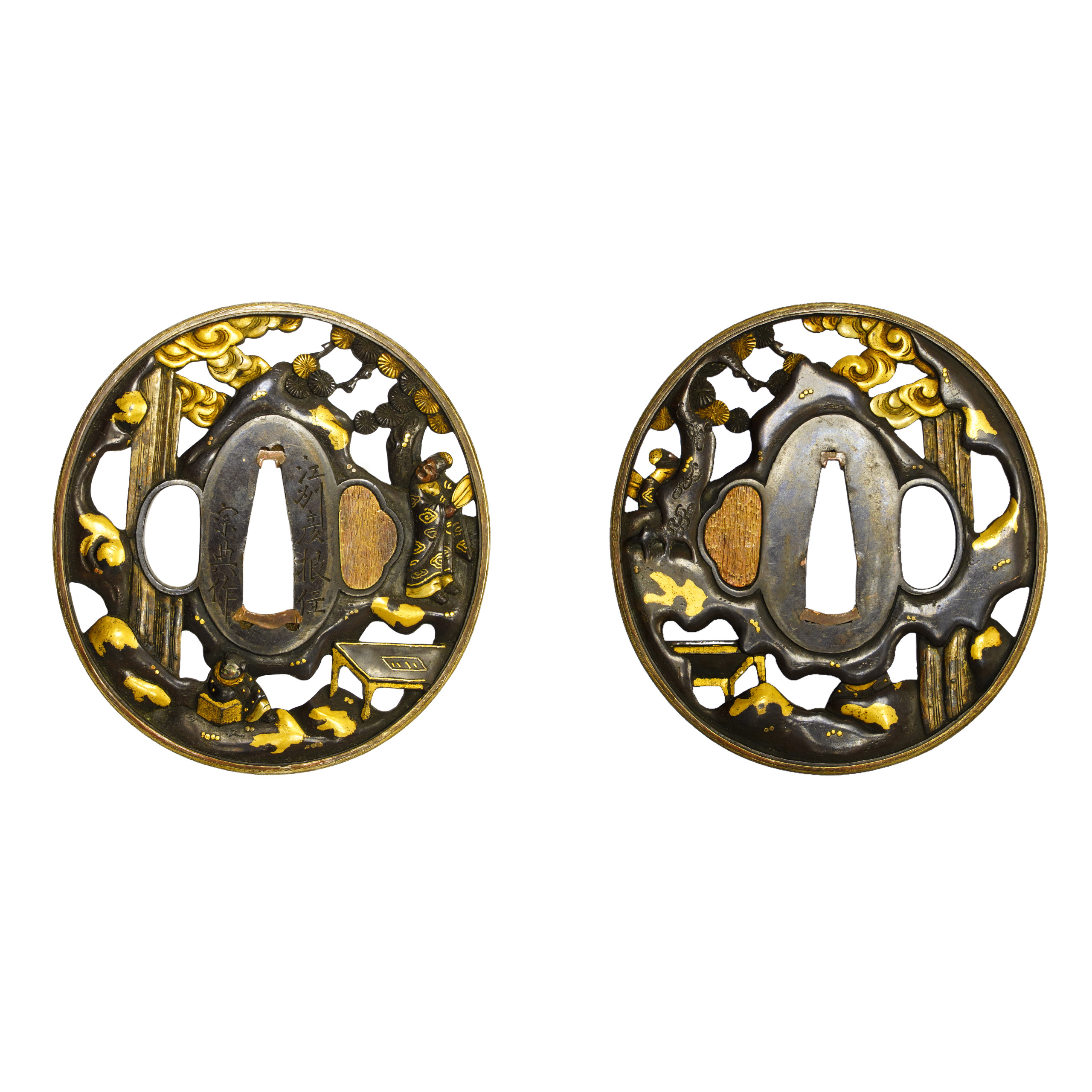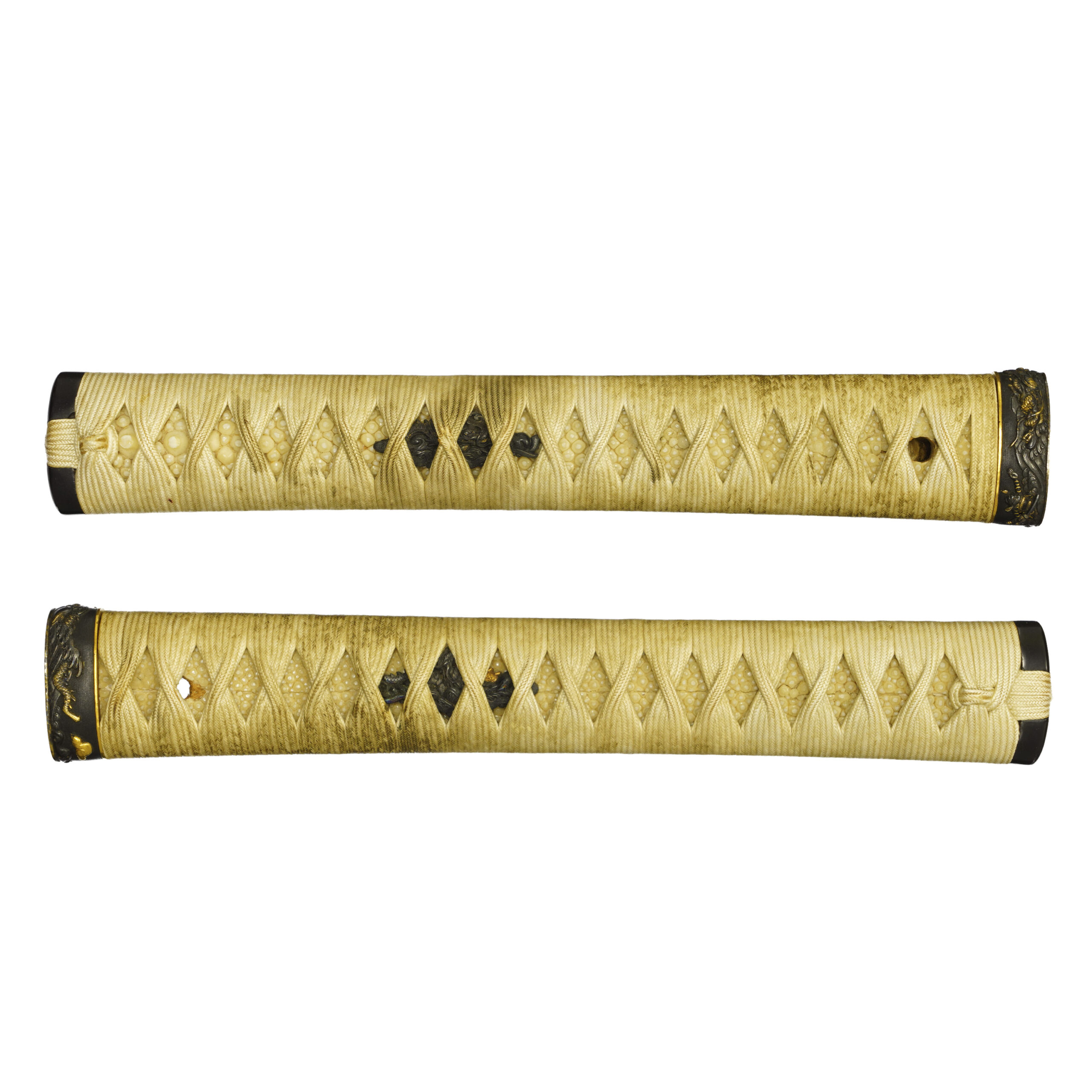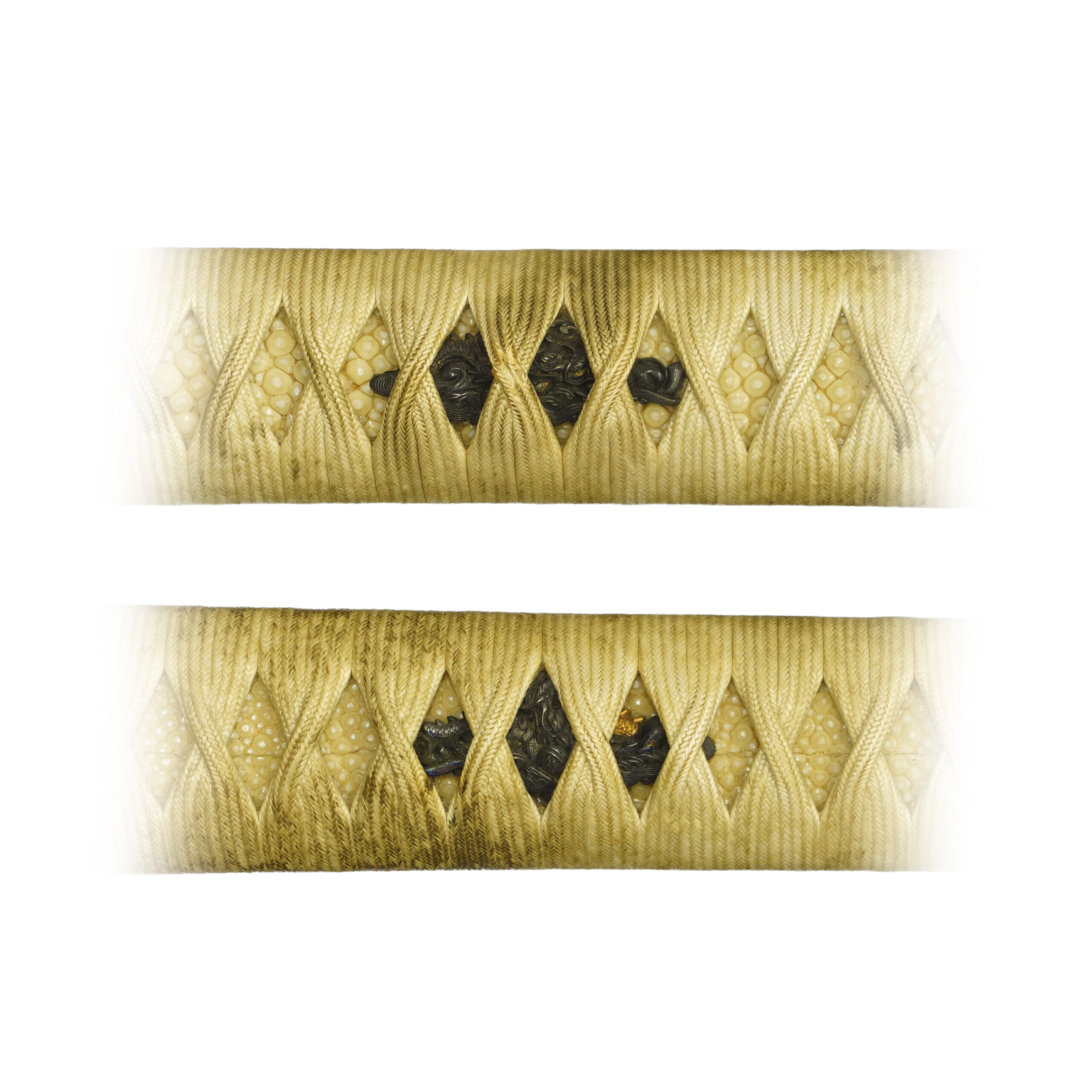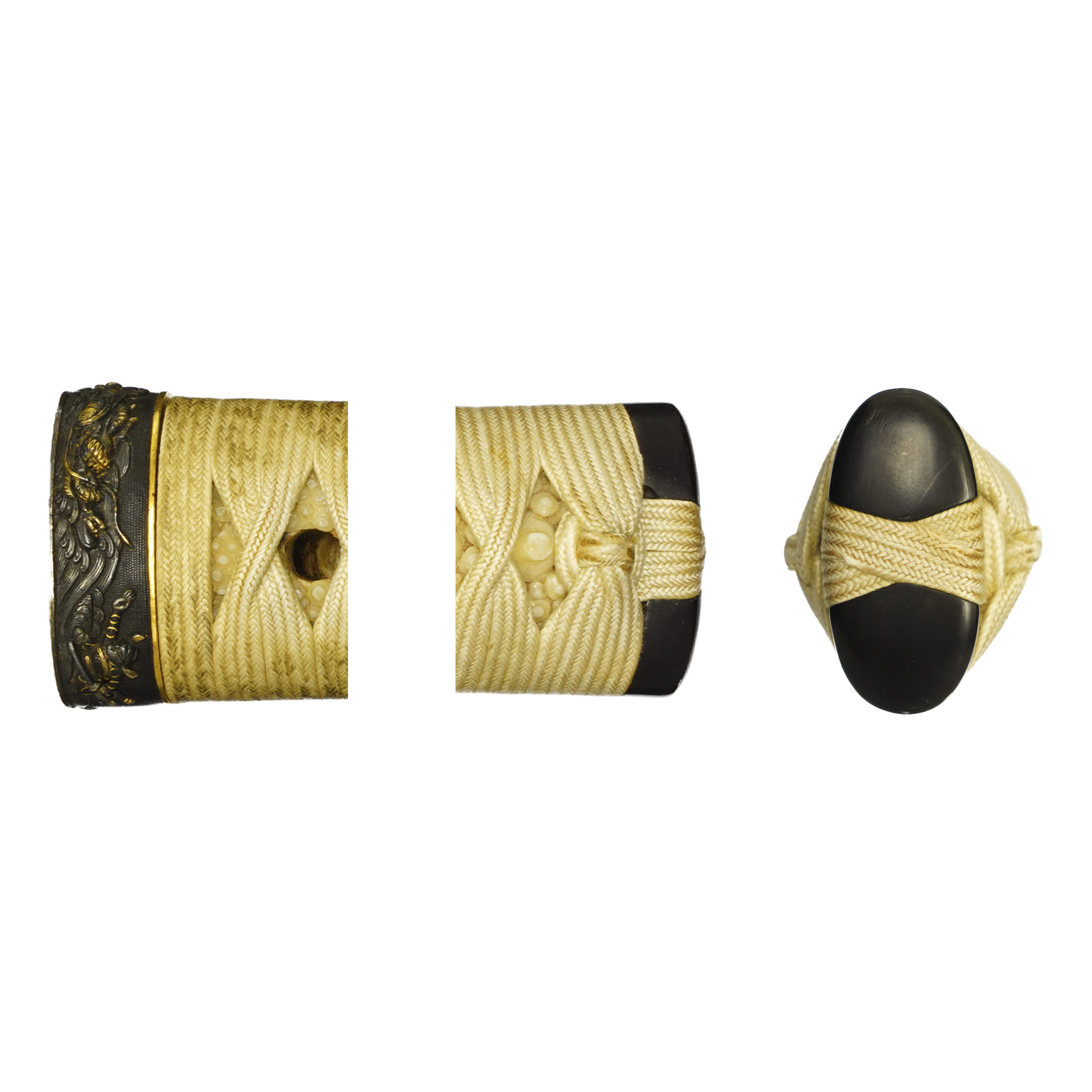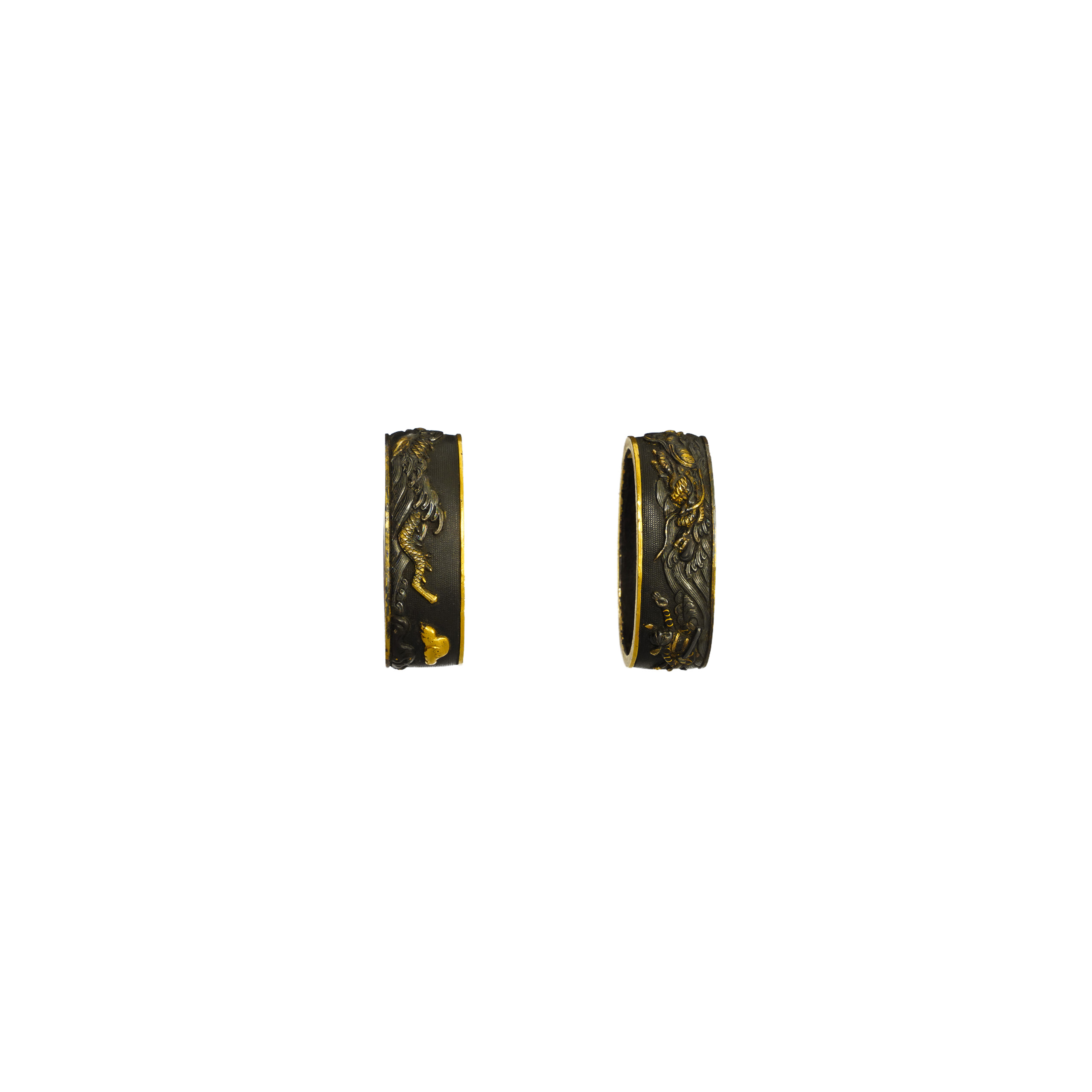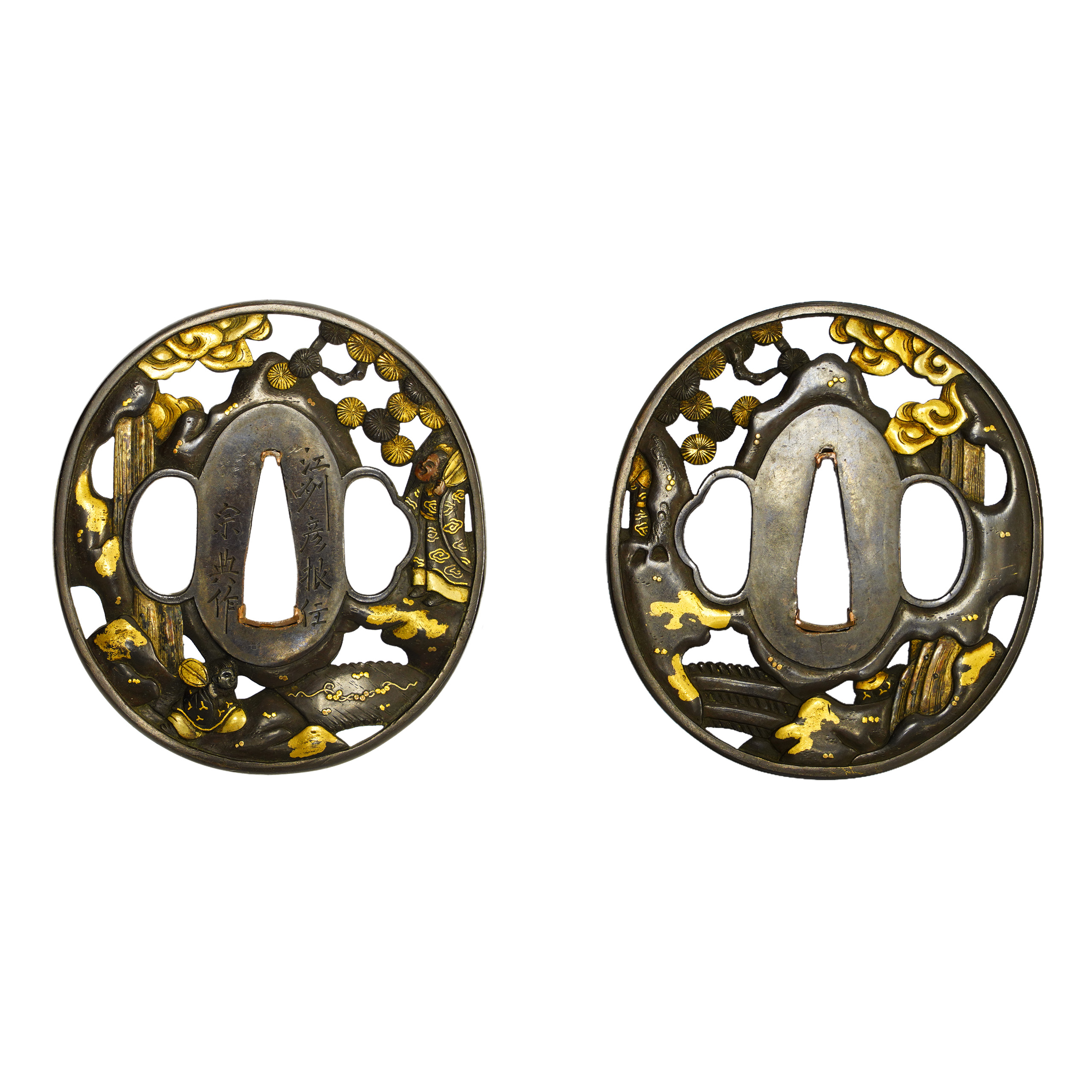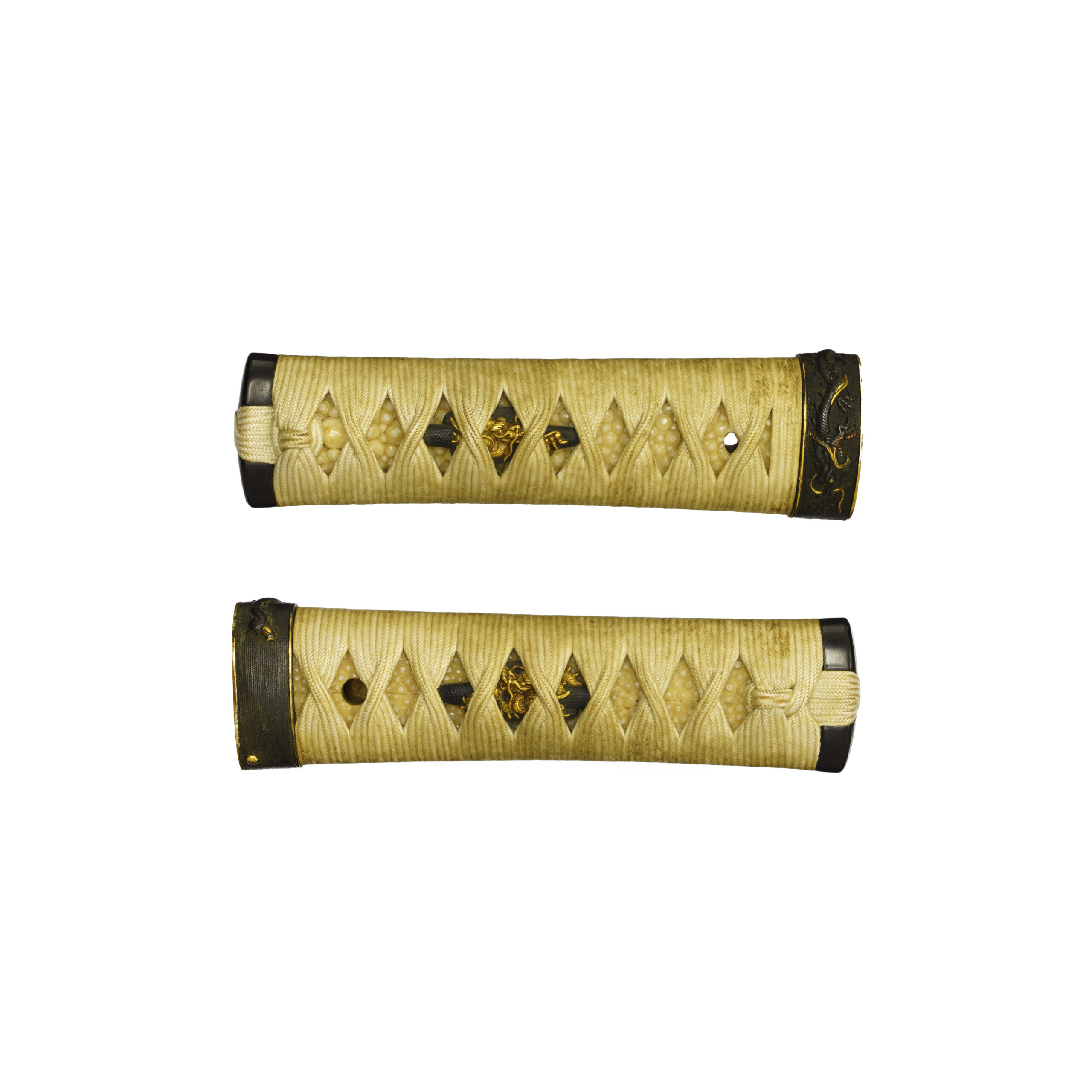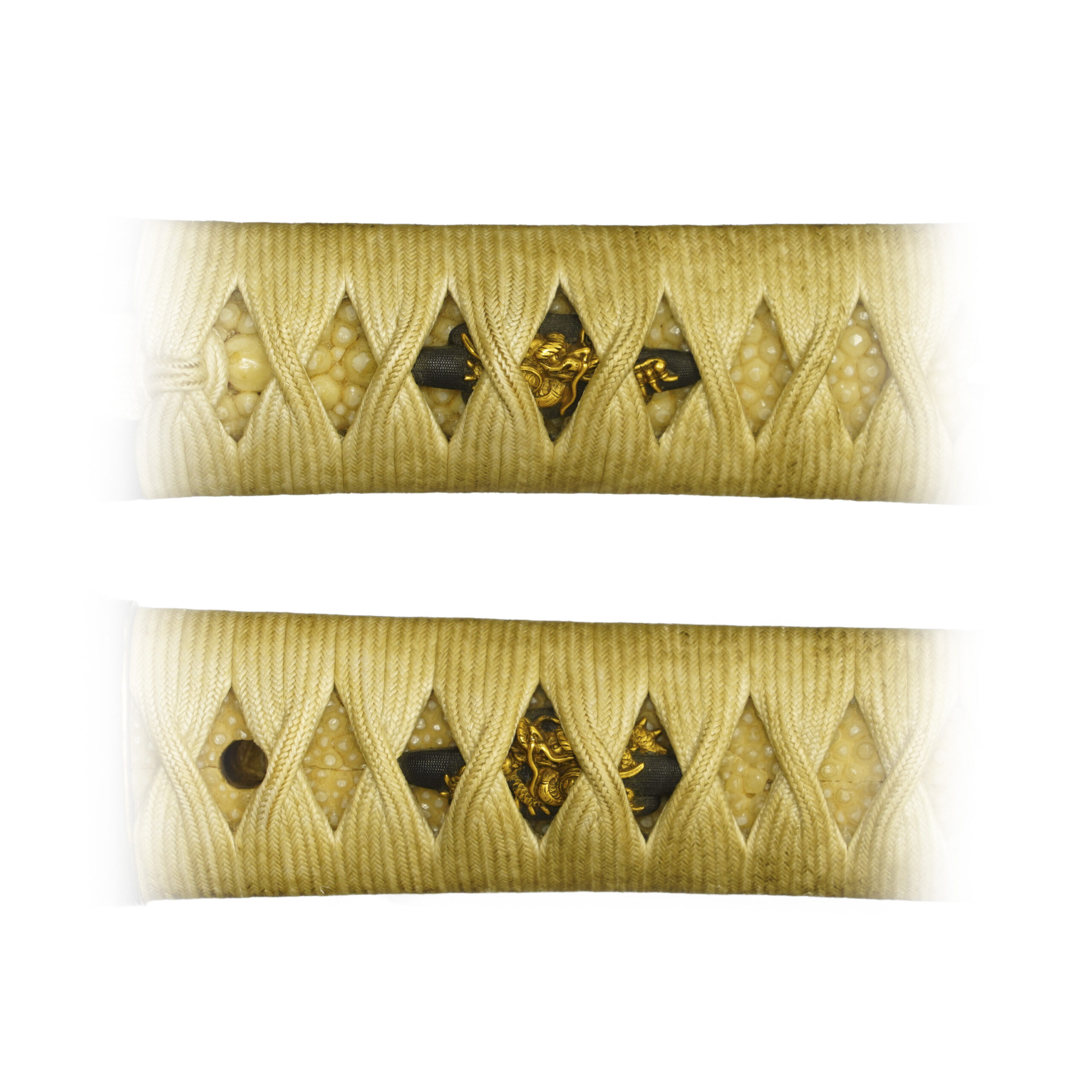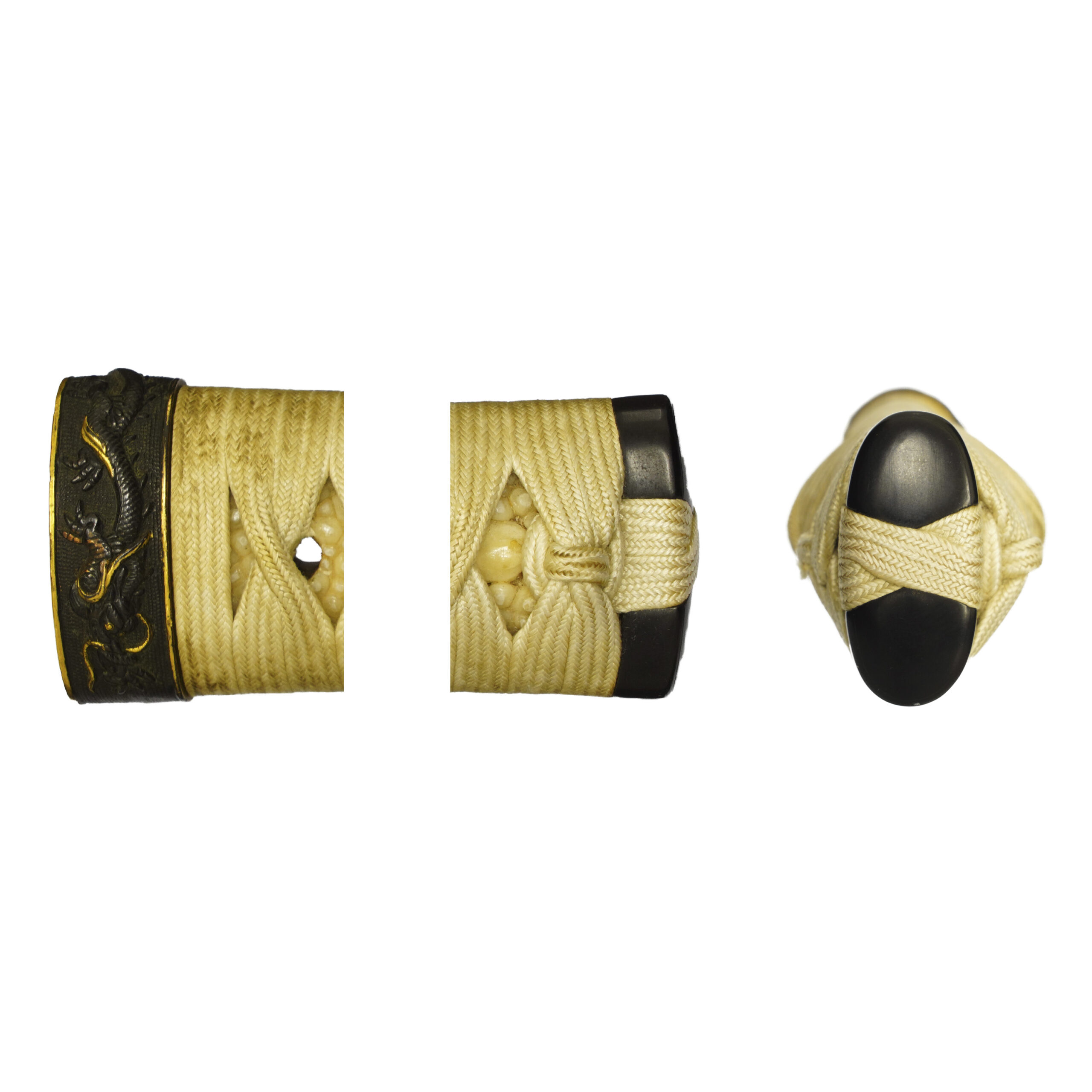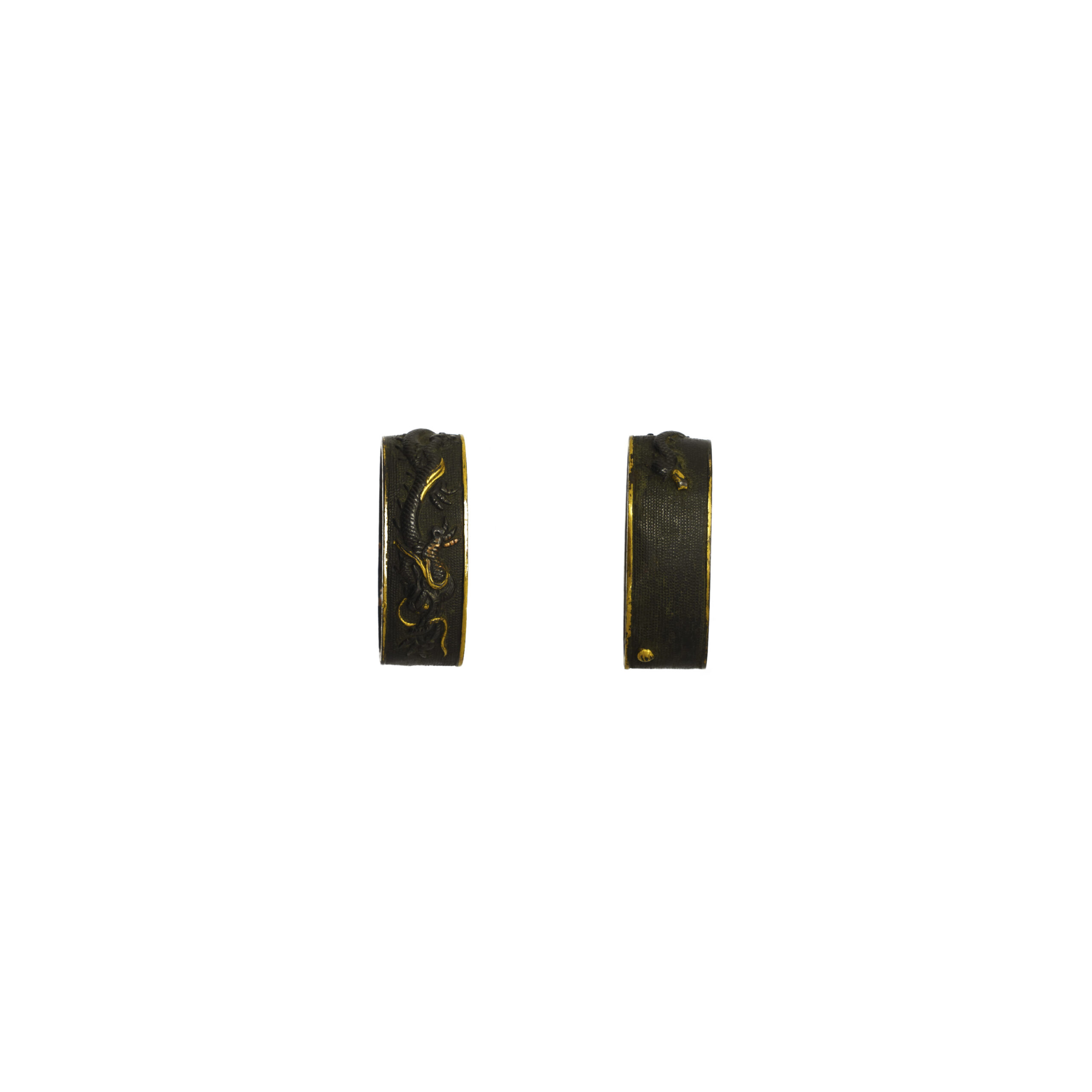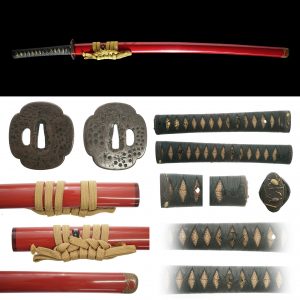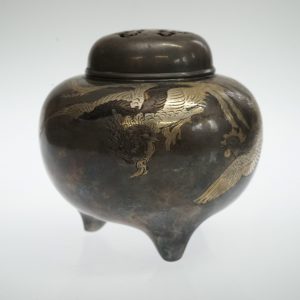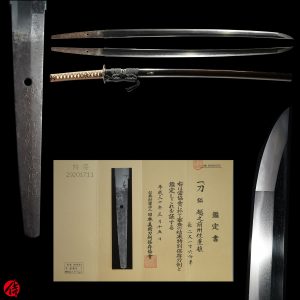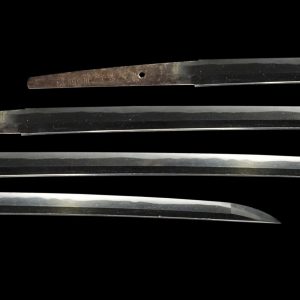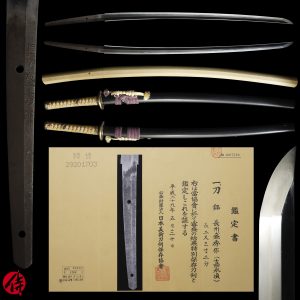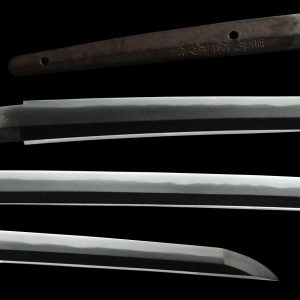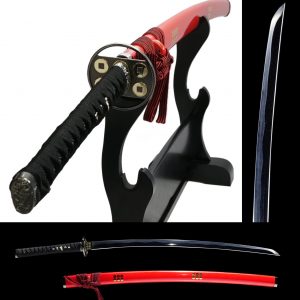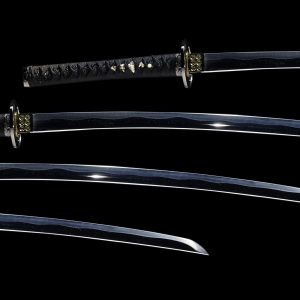Katana & Wakizashi Daisho Uchigatana Koshirae for Samurai Sword (Koshirae-10)
【Overall】
(Katana)
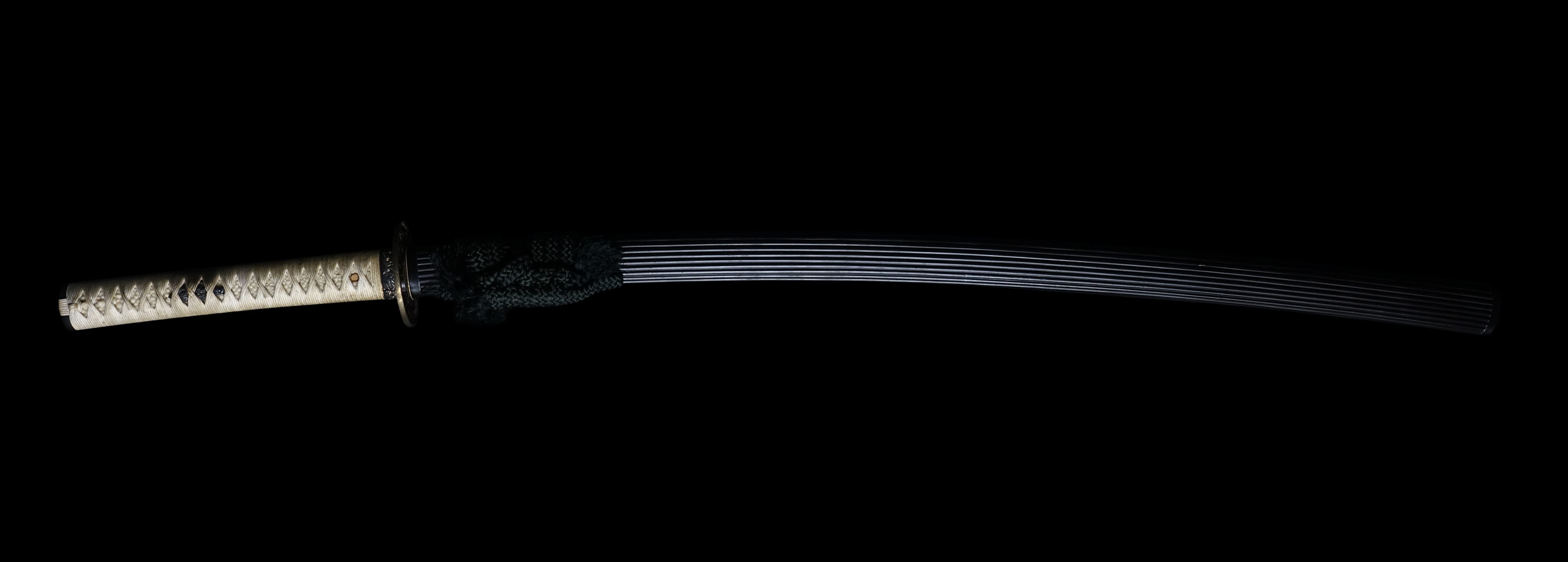
(Wakizashi)
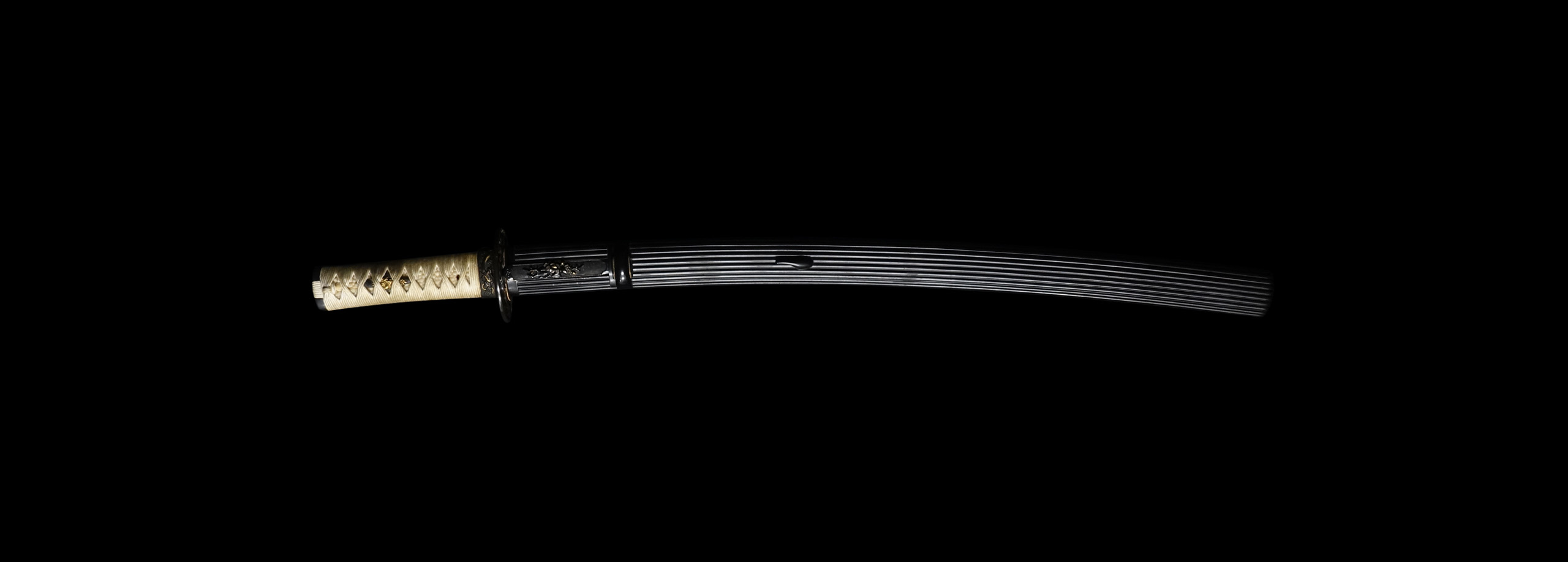
【Handguard】
Oval-shaped Tsubas (鐔, handguard) made from Shakudou. An alloy of copper and gold. It has often been used for sword mountings because of its rollability (easiness of processing), adhesiveness, and ease of plating. And also due to the beauty of black coloring.
The certificate says that the theme of these Tsubas are the Rihaku Kanbaku Zu (李白観瀑図). Rihaku (李白, 701-762) is one of the most famous poets in China. He has shown a talent for poetry since early childhood. On the other hand, he had a strong admiration for the Senkai (仙界, immortal world where hermits live), and it is said that he often spent time in the mountains. Based on this, we could surmise that the man indulging in poetry in front of the waterfall is Rihaku. The scenery of nature with trees and flowing waterfalls and the characters’ expressions are lively; this carving expression creates a bright atmosphere. In addition, gold and silver, mainly gold colorings, make ornamental appearances of these Tsubas.
You would find engraved inscriptions on each Tsuba, both of which are the same signature. It is written as follows: Goh Shu Hikone-Ju, Souten Saku (江州彦根住 宗典作). Goh Shu (江州) is the old country name of Shiga prefecture today. According to this signature, we estimate these Tsuba were made by Mogarashi/Souheishi Nyudoh Souten (藻柄子入道 宗典). It is said he worked actively in the middle of the Edo period. He lived in Hikone (彦根) area, Oumi-no Kuni (近江国, today’s Shiga prefecture). It matches with engraved inscriptions of these Tsubas. He was good at the Takabori Iroe (高彫色絵) technique and originated the Hikone-Bori (彦根彫) style. He trained lots of disciples and played an active role in his longevity over 75 years old. The second Souten was the first’s son. He followed the first’s designs and created lots of excellent Tsubas.
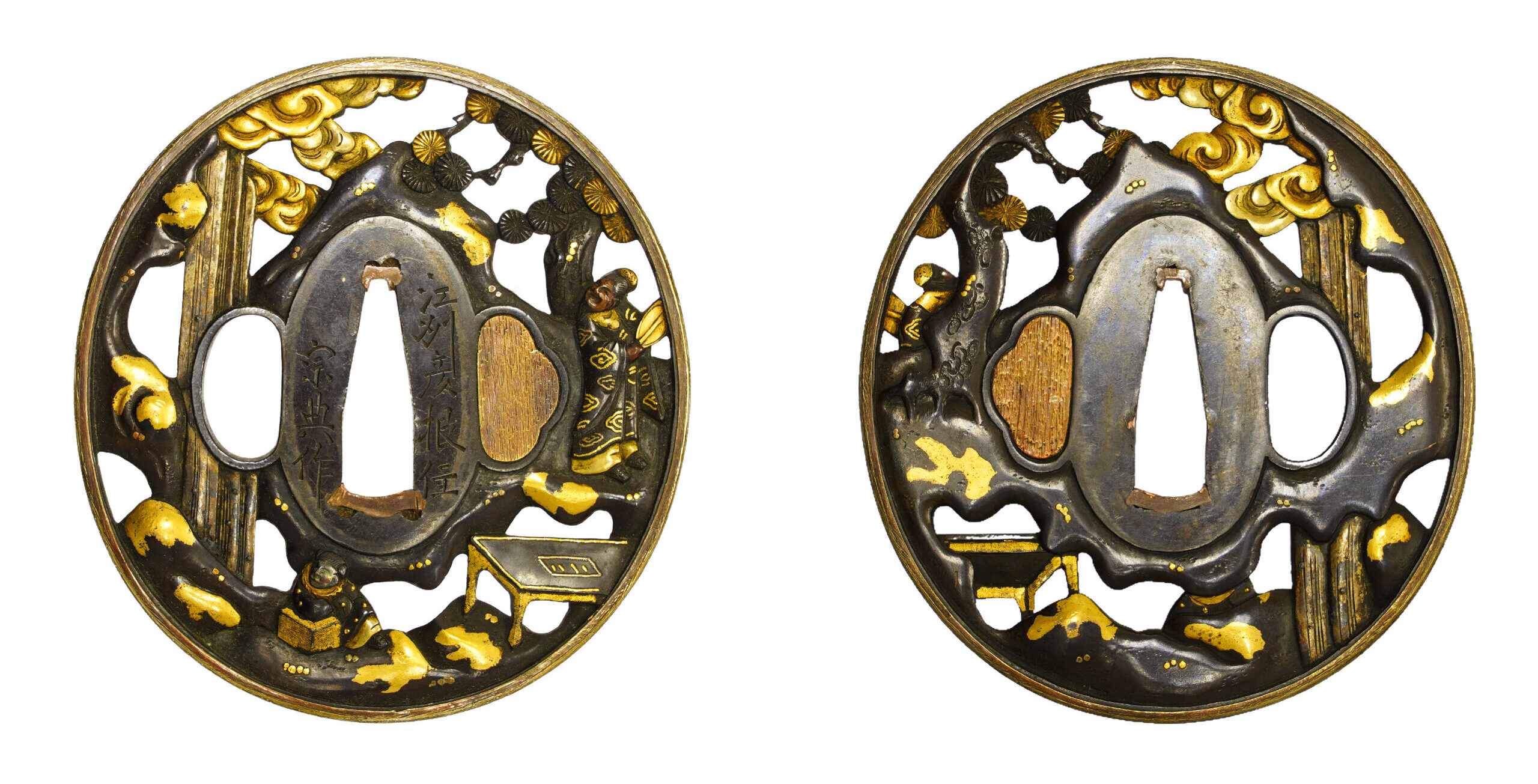

(Katana) (Wakizashi)
【Scabbard】
Scabbards are painted with an elegant black lacquer. These notched scabbards have stylish appearances.
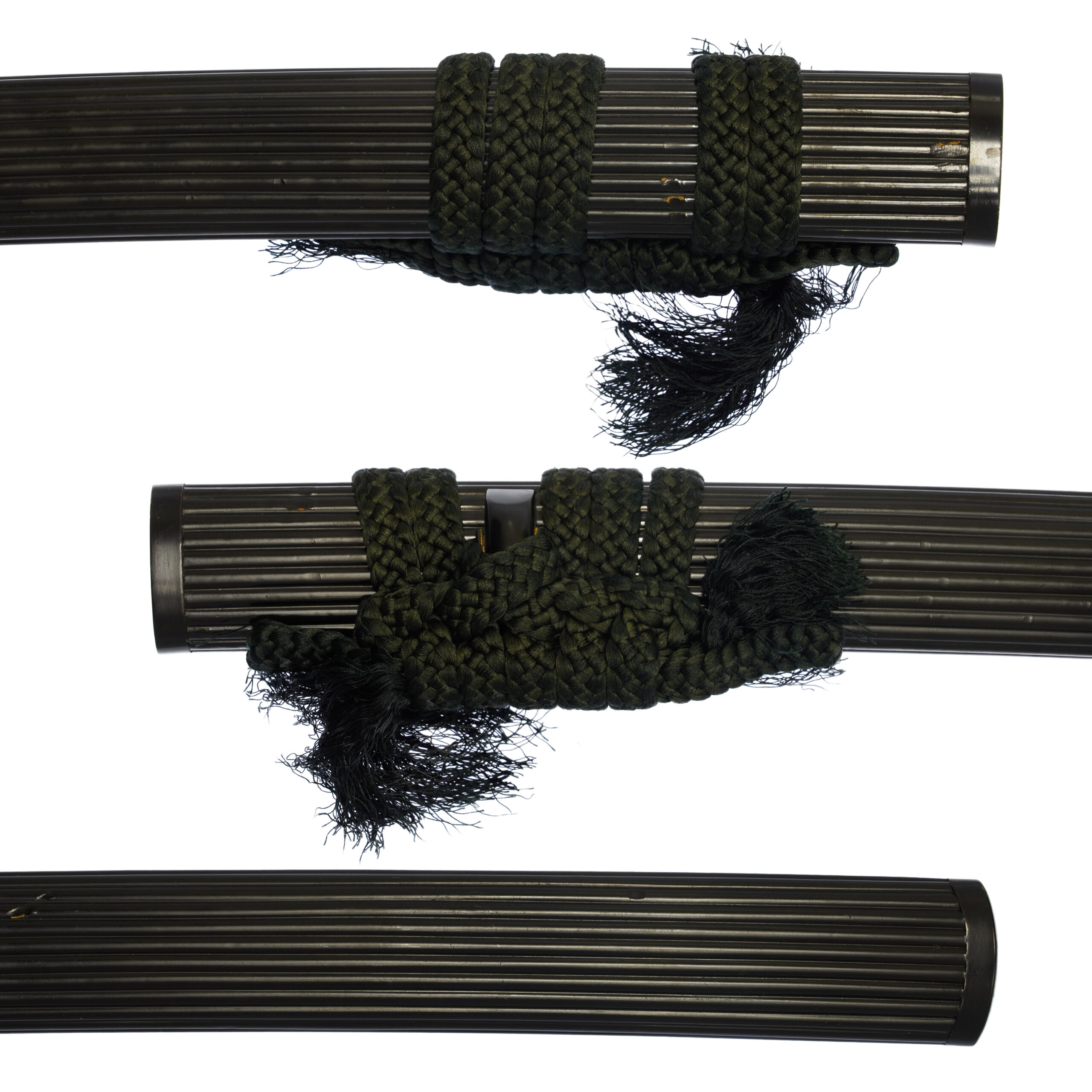
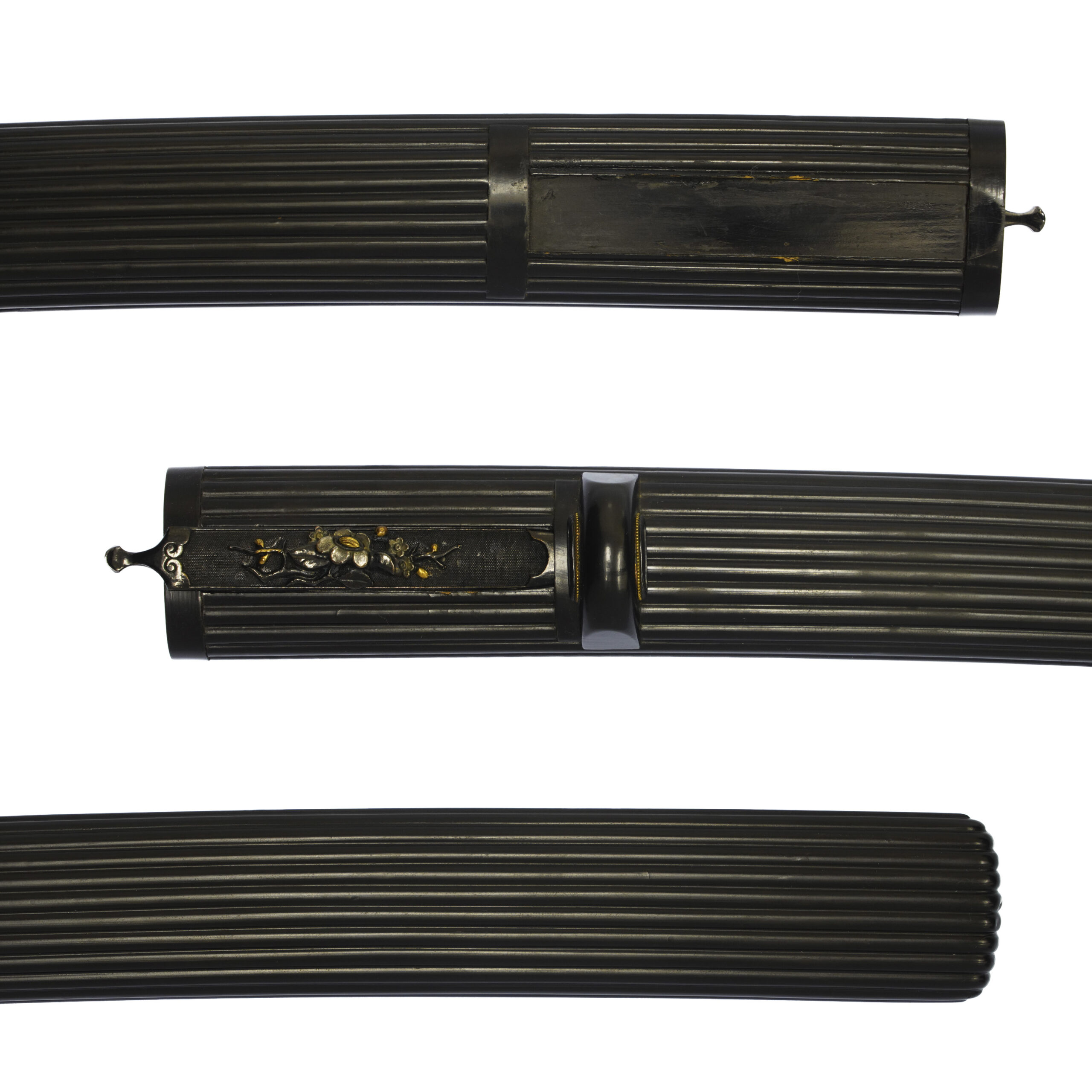
(Katana) (Wakizashi)
【Handle】
Handles are covered with stingray skin. The white thread includes the grip and reinforces the handle, not slipping when its owner holds it.


(Katana) (Wakizashi)
【Pommel】
The surface of these Fuchi Kashiras (縁頭, pommel) is decorated with the Nanako-Ji (魚子地) technique. By hitting with the Nanako-Ji Tagane (魚子地鏨, chisel used for this technique), it makes delicate fish egg-shaped protrusions and shows us the maker’s expert skill. This process adds decorativeness to metalworks.
You would find the figure of dragons designed on each Fuchi Kashira. And this is the common motif with Menukis (目貫, hilt decor) of Katana and Wakizashi Koshiraes. Please check later in the following pictures and explications.
On the Katana Koshirae’s Fuchi Kashira, there is another character: Samurai facing the dragon head-on. It is an interesting design to contrast the courageous expression of the Samurai in front of the mighty power and the relaxed expression of the majestic dragon.
Initially, the dragon was an imaginary creature found in ancient foreign traditions or myths. Furthermore, it is regarded as a symbol of auspicious signs. Its body is likened to nine animals: antlers are deer, the head is a camel, eyes are demons, the neck is a snake, the belly is the Mizuchi (蛟, a mythical animal in Japan that looks like a snake and has a horn and four legs), scales are fish, claws are falcons, palms are tigers, and ears are cows. It was thought that the dragon would reign at the top of all animals because of its odd-looking appearance.


(Katana) (Wakizashi)
【Hilt Decor】
Same as other sword mountings, these Menukis are made from Shakudou. Moreover, as mentioned above, the motif of these Menukis is the dragon. The Katana Koshirae’s Menuki depicts the figure of a swimming dragon. And the Wakizashi Koshirae’s Menuki is a combination of dragon and clouds.
According to a theory, dragons and gods dwell in the clouds. Also in Japan, there is a belief that worships the dragon as a water god. Since rice cultivation has flourished in this country, water is always an essential resource. So, the dragon motif has been familiar to Japanese people for a long time. Clouds bring blessed rain, and dragons dwell in the clouds. The combination of these motifs might have been regarded as a promising sign. We imagine many Samurai warriors favored this dignified beast design, including clouds and wave patterns.
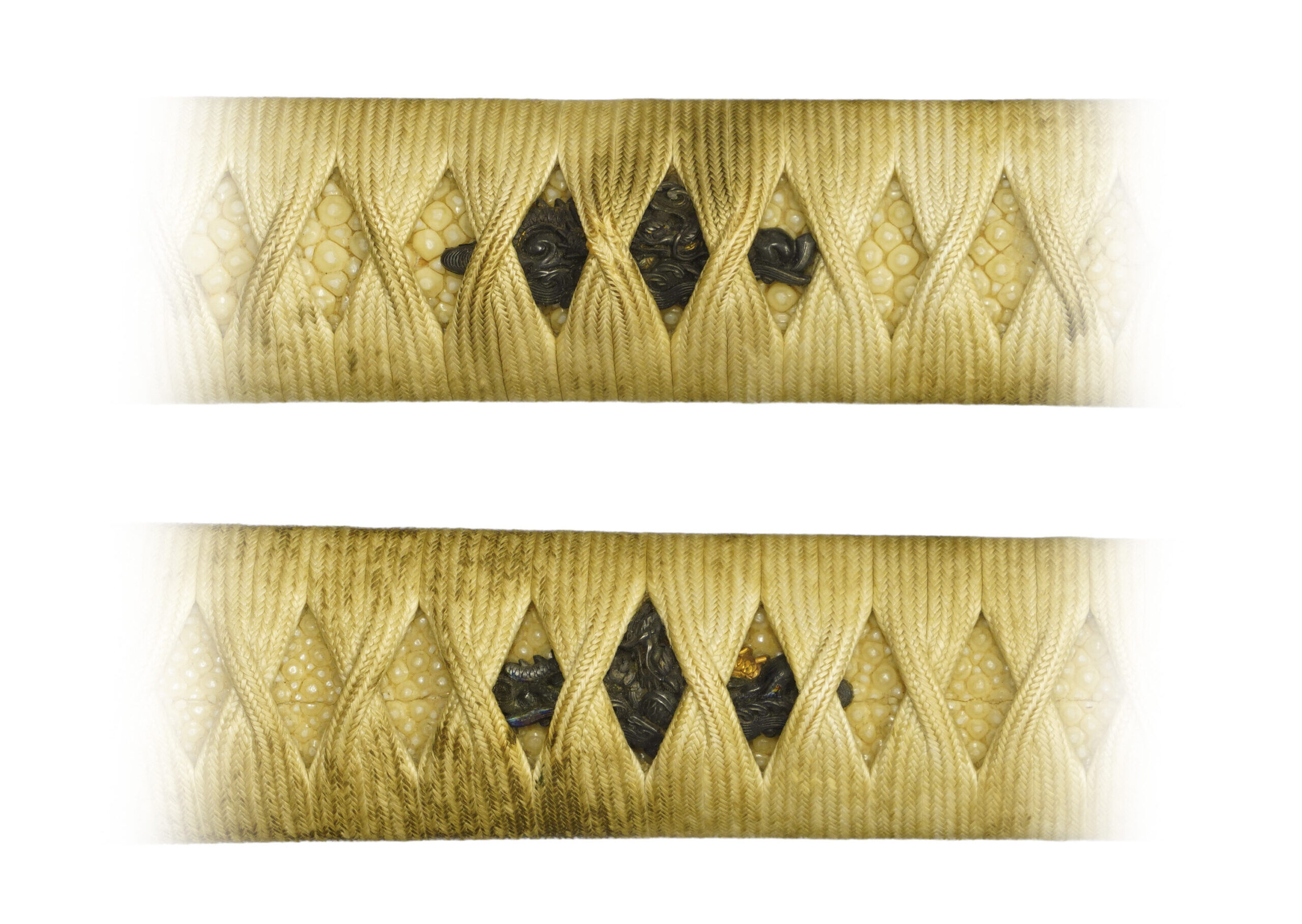

(Katana) (Wakizashi)
【NTHK Kanteisho Certificate】
NTHK, also known as Nihon Touken Hozon Kai (the Society for the Preservation of the Japanese Sword), is one of the oldest Japanese sword appraising organizations in modern-day Japan. They authenticated the sword mounting (Koshirae) on Dec 12th in the third year of Reiwa (2021). They appraised it as the Kanteisho class. The purchaser will receive this original certificate as well. We can also translate what is written into English and make a PDF file for your record if you request.


【About us】
Samurai Museum is located in Tokyo, Japan, exhibiting antique artifacts related to the Samurai history. Samurai Museum Shop is the place for those who are interested in Japanese culture and craftsmanship. We deal with antique Samurai swords/armor, traditional crafts made in Japan and so on.
【Payment method】
We accept payment through Stripe (Credit card), PayPal, Apple Pay or ChromePay, all of which are secure payment methods. Also, you don’t need to make an account on Stripe for the checkout. If you prefer other payment method, please contact us. You may either pay in JPY, USD, AUD, CAD, EUR, CHF or GBP. The price is set in Japanese Yen. Prices in other currencies are automatically calculated based on the latest exchange rate.

【Shipping duration】
We normally ship via EMS (Express Mail Service) provided by Japan Post. It usually takes at least 5-14 days to deliver the package after you place an order. Time of delivery is estimated as accurately as possible by the carrier but does not take into account any delays beyond our control such as by inclement weather, post office holiday seasons.
We offer Free International Shipping as long as we can ship your order by either EMS. If you prefer other shipping carriers, please contact us.
We will inform you of the order’s tracking number via email. Please make sure you fill out your valid email address correctly.
*Please keep in mind that due to the spread of COVID-19, there might be possible delays in delivery. If you like to make
sure if EMS shipping is available to your country, please contact us.

【How to make sure the condition】
Please keep in mind that what you are going to purchase is an antique item. We uploaded high resolution photos for you to check its condition thoroughly. If you like to see more photos with different angles, please feel free to contact us. We will be happy to send them to you so that you can make informed decision.
It is essential for us to know that you are happy with your choice of Koshirae and we are prepared to use the best of our ability to serve you.
If you like to check more Koshirae, please check the link below.
https://www.samuraimuseum.jp/shop/product-category/sword/koshirae/
